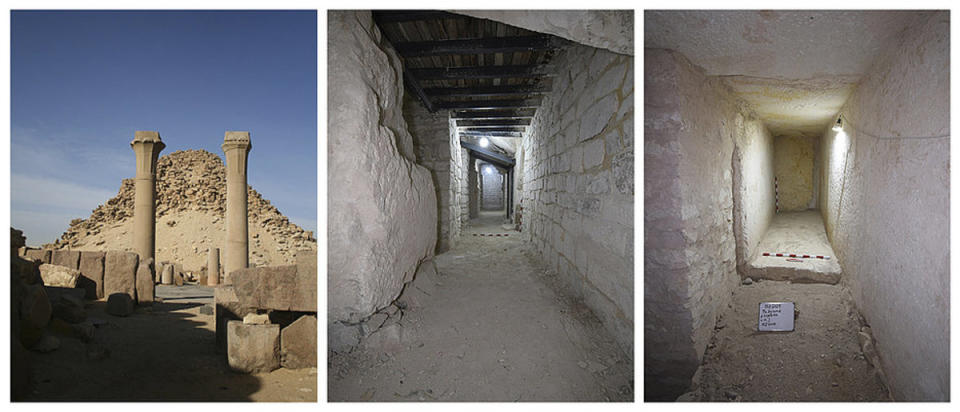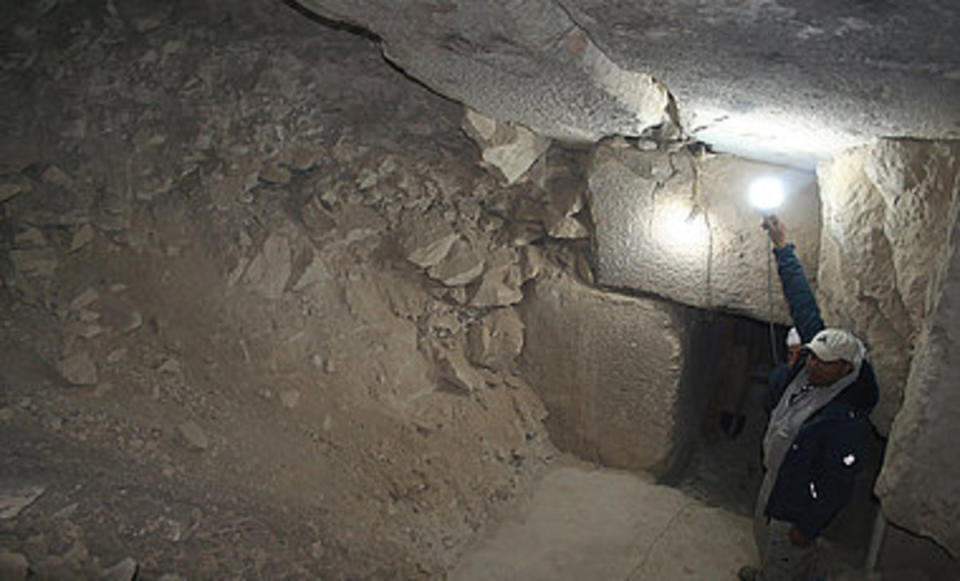4,000-Year-Old, Previously Unknown Chambers Discovered Within Egypt’s Pyramid of Sahure
- Oops!Something went wrong.Please try again later.
Scientists have unearthed previously unknown rooms in the pyramid of Sahure in Giza, Egypt.
The dig was led by Mohamed Khaled, an Egyptologist at Julius-Maximilians-Universität of Würzburg (JMU) in Germany. His team unearthed a number of chambers (or “magazines”) which likely stored “funerary furniture.” They promise to give new insight to the pyramid itself, as well as to the pharaoh Sahure himself, who ruled around 2500 B.C., during the Fifth Dynasty.
According to his report on the findings, Khaled’s mission was to safeguard the pyramid’s integrity. In 2019, he and his team set about stabilizing the structure from within, going from room to room. During this process, they came upon the chambers which had been inaccessible to previous explorers.
Of course, that was a great moment,” Khaled told Men’s Journal. “We were jumping from happiness [because] we have achieved something that no one [had] done before.” His team and the construction workers had an impromptu party to celebrate.
During a similar mission in 1836, John Perring had seen indications of passageways which he suspected led to storage rooms, but they were inaccessible due to debris and general decay. Khaled and his researchers used 3D laser scanning to intricately map the inside and outside of the pyramid, giving them a slight edge. Thanks to their efforts, John Perring’s hypothesis has finally been proven true. “We were able to do this thanks to our technology and the good team,” Khaled said.
Describing their discovery, the Egyptologist told us: “The rooms are magazines for the funerary furniture of King Sahure. Unfortunately, we did not find anything inside, but one can imagine that King Sahura had more treasures than King Tutankhamun. The state under Sahura's reign had a very strong economic situation.”

Mohamed Khaled / Julius-Maximilians-Universität of Würzburg
Eight chambers have been excavated so far. Most of them have suffered severe deterioration over the years, but parts of the original walls and some of the floor can still be seen. In order to ensure the pyramid didn’t collapse at some point Khaled and his team replaced the damaged walls with new retaining walls.
Once the restoration is complete, Khaled and his team hope to open it up to visitors, so that everyone can explore King Sahure’s secret rooms.

Mohamed Khaled / Julius-Maximilians-Universität of Würzburg

